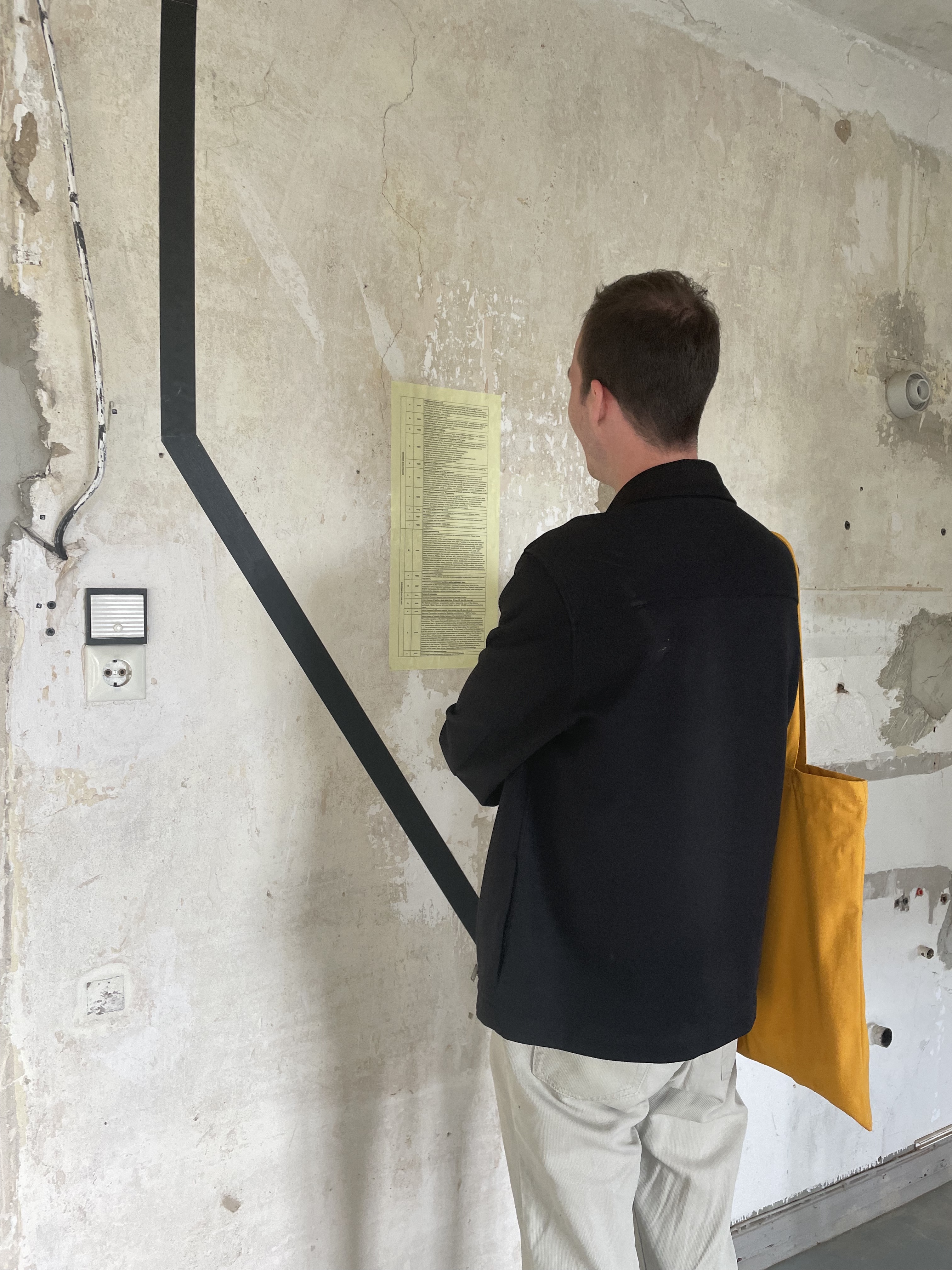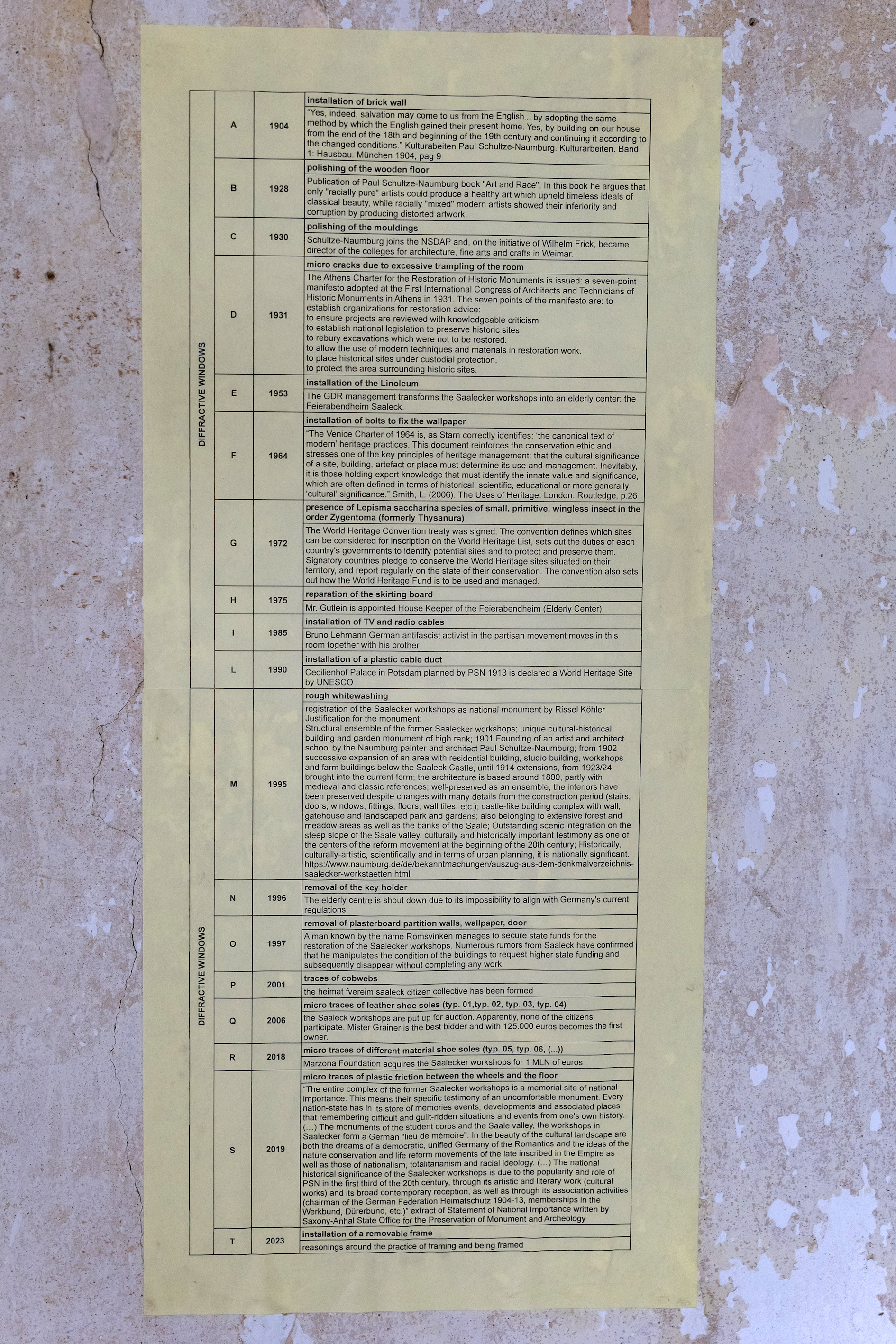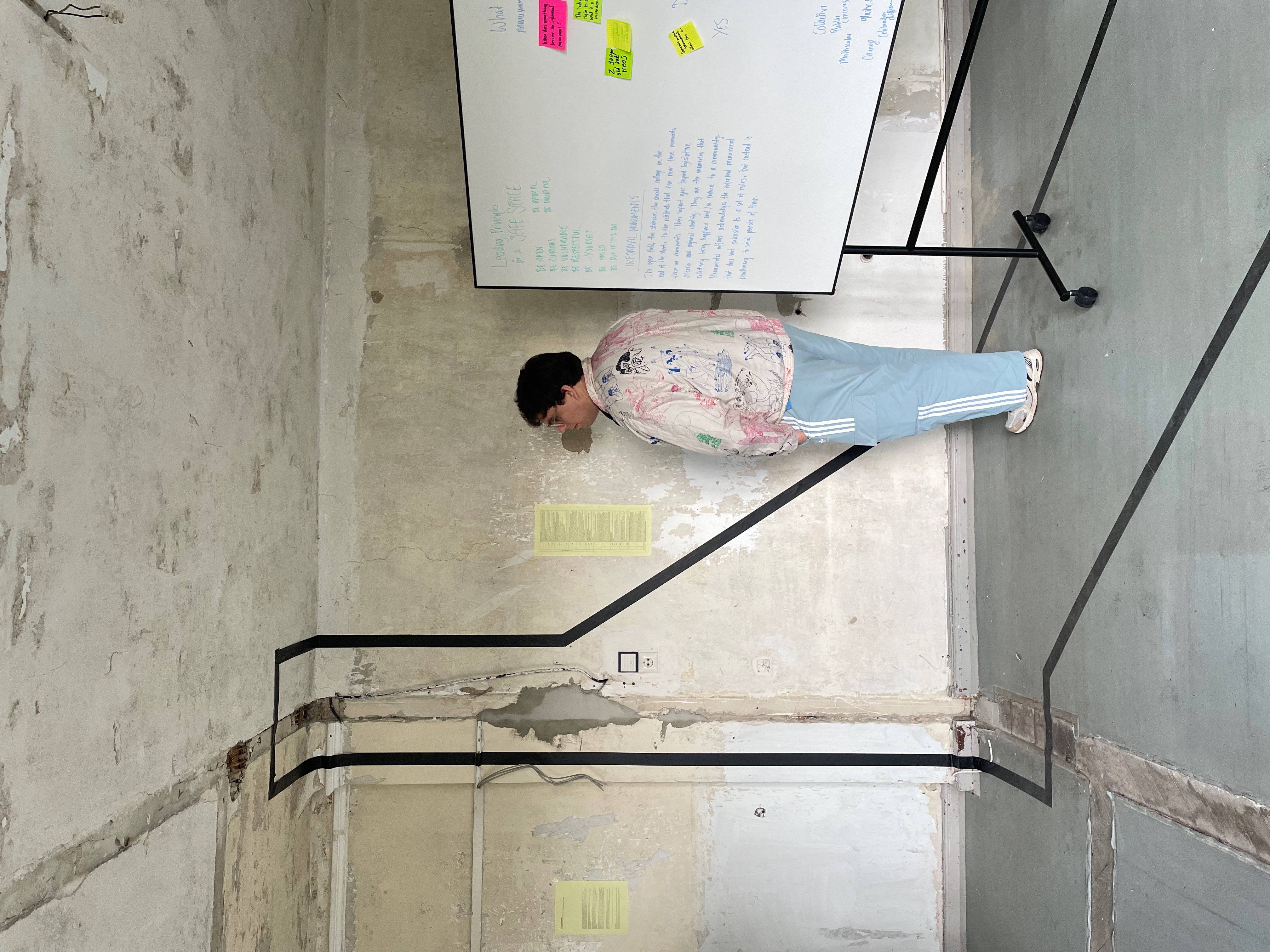
picture by Silvia Susanna

picture by Falko Matte

picture by Falko Matte

picture by Silvia Susanna

picture by Anton Cordes
diffractive windows
tracing the material entanglement of the Saalecker Workshop, Germany through the practice of framing and being framed.The project originates from a reflection on the labels 'Zedler-Restaurierung' found throughout the Saalecker Workshop—the first project of the Nazi ideologist Paul Schultze-Naumburg and location for several meetings of prominent National Socialists, including Hitler.
The 'Zedler-Restaurierung' are 5x5 cm paper labels affixed to every material in each room that serve as a testament to the currently authorized preservation discourse (AHD)1. After being designated as a national monument in 1995, a specific material investigation on the building became mandatory. Therefore, any formal changes interfering with Schultze-Naumburg's last implementation required permission from the State Office for Monument Preservation.
What is the relation between the materialization of the racial ideology of Paul Schultze-Naumburg and the current knowledge of cultural heritage? Who is validating a cultural value and according to which criteria? Who earns a place in the chronicles of cultural heritage and for what reasons? Whose narratives are acknowledged, remembered, and endured in the national collective memory while others fade into obscurity?
The project materialized after a series of conversations I had with the inhabitants of Saaleck, on-site and online research, and material investigation of the Saalecker Workshop.
The project revolves around three different diffractive windows.
1st / At the second room on the left side of the second floor. A series of projected pictures of the Saalecker Workshop portraying every day life moments of people inhabiting the place during the GDR period when the building was reused and re-activated as an elderly center. The slide-show is in front the 'Zedler-Restaurierung' label of the entrance.
2nd / On the left side of the second floor, in the first room, I have identified an accumulation of visible time-space mattering achieved through the stratification of various materials over the years. Using black tape, I have outlined a frame and within it, affixed a series of letters. Each letter corresponds to a legend, strategically positioned to compel the observer to enter in the taped area for reading. Each letter in the legend is associated with a specific year, a material description and a crucial event that occurred in that year. The legend proposes a time-material-mattering.
3rd / On capital of the stairs’ column, where there is only a tape frame with no legend. At this point, the observer has no hints.
These three frames define what I name diffractive windows (the projected photos, the big taped area with a legend, and taped capital)2 The project aims to go off the established preservation protocols and open up possible time-material-mattering frameworks that crossover facts, events, and materials for collectively delving into the process of validating the value, the relationship between the evaluator and the value, and the possible positions that everyone could take while defining which materials matter and in relation to which narrative.
The diffractive windows are not meant to be an alternative to established preservation approaches but rather a frame to stress the relationship between the object assumed to be preserved and the subject analyzing. The aim was to underline the inseparability of the material and discursive dimensions of reality, as well as the material-discursive nature of boundary-drawing practices and the responsibilities within these power dynamics. Ultimately, the project performed as an invitation to contemplate the epistemological foundations that underpin the narrative surrounding national memories.
(1) Laurajane Smith, The Authorized Heritage Discourse (Chicago: University of Chicago Press, 2006)
(2) "my method is to engage aspects of each in dynamic relationality to the other, being attentive to the iterative production of boundaries, the material-discursive nature of boundary-drawing practices, the constitutive exclusions that are enacted, and questions of accountability and responsibility for the reconfgurings of which we are a part."
Karen Barad, Meeting the Universe Halfway: Quantum Physics and the Entanglement of Matter and Meaning (Durham: Duke University Press, 2007). p. 93.
---
The project has been assisted by Julius Wolff, developed during the dieDAS fellowship program “Monumental Affair” directed by Germane Barnes.